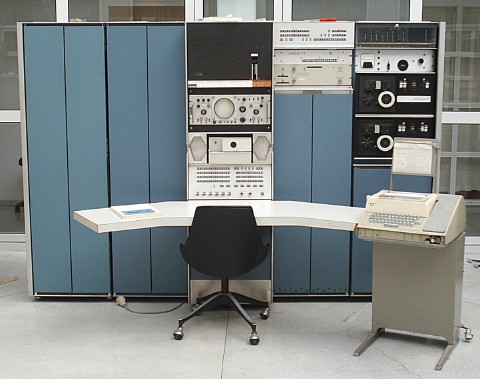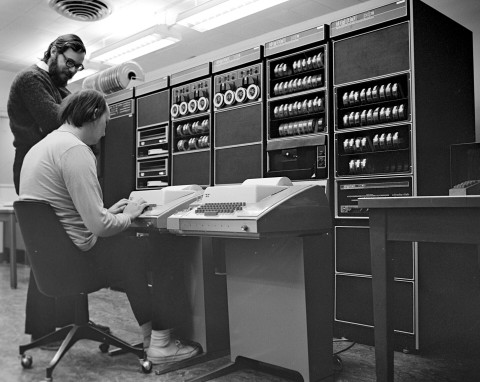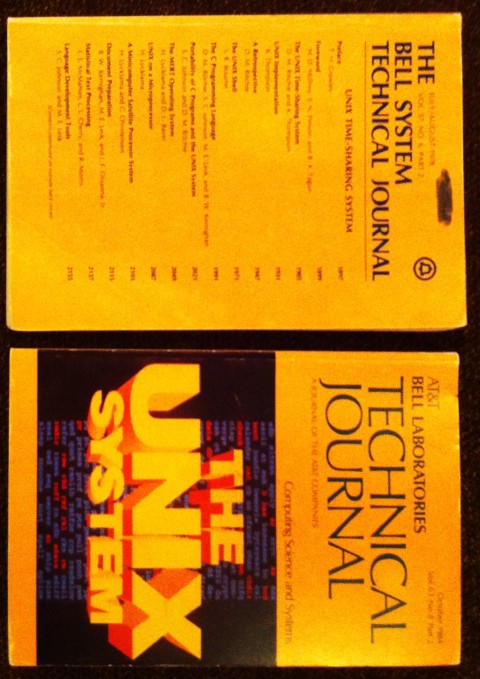Bell Labs
Let’s pause here and discuss a few things.
Bell Labs was a research institute founded by no other, but the famous Alexander Graham Bell in 1876. It is known as one of the most innovative places ever conceived. It was the birthplace of radio astronomy, the transistor, the laser, the photovoltaic cell, the charge-coupled device (CCD), information theory, and the programming languages B, C, C++, S, SNOBOL, AWK, AMPL, and the UNIX operating system. The work completed there was awarded 10 times with a Nobel Prize1.
But it wasn’t all pretty. AT&T (owner of the lab) was the telephone company in the USA. It had the de facto monopoly for most of the 20th century. This led to a consent decree with US Government under which AT&T was forbidden to branch out to other markets. This agreement happened in 1956 and will be very important for our story2.
Another cool tidbit: back then computer screens as we know them now were yet to be invented. There were ways for computer to present information on a screen, but it was not feasable to present information back to the user in real time. The monitor was a separate machine and an assembly code to light up individual pixels would need to be sent every time to it. If the user wanted to see what the edited document looked like, the only way to achieve that was via a printer. Try to print a page every few lines - let alone every character. Even the bravest of the brave would not escape the anger of the finance department.
Getting a computer
After this short intermission, let’s return to UNIX.
The popular history of UNIX goes as follows: Ken Thompson finds a PDP-7 microcomputer, starts playing with it and suddenly realizes that he has created a new operating system.
What he actually wanted to do, was to play a damn game. A completely reasonable reason to revolutionize the industry if you ask me.
Ken was a huge fan of Space Travel, but it was only available on mainframes. And since those costed an arm and a leg, end users were paying for time they used. A single game of Space Travel could cost Ken USD 50-753. Luckily, he was able to find a discarded PDP-7 from another department2.

What the PDP-7 was, was a refrigerator size 18bit monstrosity2. It was at the time a 5-year-old and obsolete4 leftover from an ended research into audio-psychology. No one cared what would happen to this particular machine. Have I mentioned just how stinky rich the Bell Lab was? So, Ken started rewriting the game for that PDP-7 as GECOS Space Travel.
Porting the game proved challenging and difficult to debug, so they developed a system for PDP-7 to make developing the game easier. This was how PDP UNIX was born5. A guy wanted to play a god-damn game and now bankrupt in the process2
Labs management was very happy with this turn of events as UNIX was something to show after the Multics fiasco. They allowed Ken to get himself a PDP-11 and port UNIX to it. It was a cheaper machine compared to PDP-7, but it was also 16bit - which was a nice change. Officially, the new system would allow for document preparation for patent applications4. The biggest benefit however was the popularity of this machine - over the next decades it could be seen everywhere across enterprise America. You can buy a working one from eBay today. It won’t be easy nor cheap, but definitely possible.


Unix 1
So here we are, November 1971, and UNIX 1 for PDP-11 is released6
A year later Ken notes:
[…]the number of UNIX installations has grown to 10, with more expected. None of these has exactly the same complement of hardware or software. Therefore, at any particular installation, it is quite possible that this manual will give inappropriate information. […] Also, not all installations have the latest versions of all the software.''
– Unix Programmers Manual, Second Edition. Thompson Ken, Ritchie Denis, 1972
Note, that this is 10 mainframes across Bell Labs, so user count was significantly higher.
It’s also worth to talk about release cycle. UNIX was in constant development, and each installation would use current snapshot at the moment of installation. This is why Ken notes that each part of UNIX could differ between installations. What is also important is that due to licensing of UNIX (or rather lack of thereof), each installation would be accompanied by full source code. Administrators were able to modify the system. Crazy times.
Still, in June 1972 the 2nd Edition of UNIX was released and every 7–8 months a new release was out.
In November 1973, a 4th Edition was released, and it was the first one released to Universities. It made quite the buzz, and first user groups started forming under the USENIX name2. It’s worth to mention that this version was rewritten in C, as previous versions which were created in Assembly This made it the first portable UNIX, as it could be recompiled to any compared, as long as it also had a C compiler4.
The system was presented by Ken and Denis during the 4th Symposium on Operating System Principles the same year, and a year later Ken and Dennis publish the first paper on UNIX - “The UNIX Time-Sharing System” in the Communications journal of ACM.

The word was out and UNIX became known outside of Bell Labs.
In the next episode of History of Unix: the scariest creature of them all. Lawyers.
-
The hidden early history of unix the forgotten history of early unix ↩︎ ↩︎ ↩︎ ↩︎ ↩︎
-
The early days of Unix at Bell Labs - Brian Kernighan (LCA 2022 Online) ↩︎ ↩︎ ↩︎
-
Living Computer Museum has a real PDP-7 running PDP Unix if want to chek it. ↩︎
-
The 50th anniversary of this event was very big for a small group of fans. ↩︎
 History of Unix
History of Unix